It is believed that saffron is one of the oldest spices, it has been popular for more than 3000 years. Known as the "king of spices", today saffron is one of the most expensive, valuable and special seasonings to taste in the world. It gives your dish a unique taste and many of us are often willing to pay more to get the ultimate gastronomic experience.
In essence, saffron is a spice that is obtained from the flowers of the saffron crocus (Crocus sativus) - cultural species of crocus family Iridaceae. Saffron stands out with its typical bitter taste and smell of hay.
This is caused by the chemical picrocrocin safranal. Saffron also contains a carotenoid dye, crocin, that gives food a rich golden-yellow color. These traits make saffron a much sought ingredient in many foods worldwide.
It is also used in medicine, but in cooking, it should be used in small amounts because of its strong flavor. The term "saffron" is derived from the Arabic word "za'faraan", which means "yellow". The Latin name is saffron "safranum". "Safranum" is also linked to the Italian "zafferano" and Spanish "azafrán".
History of saffron
Saffron was first cultivated in the region of Greece. The Middle East has for a long time used saffron, Egyptian medical texts mention it around 1500 years BC. More ancient traces of saffron were found in ancient writings from the Sumerian civilization. Minoans portrayed saffron in their palace frescoes around 1500-1600 BC, showing its use as medicine. Even the legendary Cleopatra used saffron for her bath, to deliver more pleasure in lovemaking.
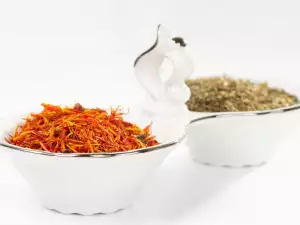
Egyptian healers used saffron as a treatment for all varieties of gastrointestinal complaints. Saffron is used as a fabric dye in such Levant cities as Sidon and Tyre. Roman scholar Cornelius Aval Tsels prescribes saffron in medicines for wounds, cougsh, colic, and scabies. The Romans were passionate fans of saffron. The colonists took their saffron with them when they settled in southern Gaul, where it was extensively cultivated until the fall of Rome in 271, Competing theories state that saffron only returned to France with 8th century AD with the Moors, or with the papacy in Avignon, in the 14th century.
Its name comes from the ancient times and was associated with the name of a lovely young man named Crocus. According to legend, there are two tales about the appearance of the plant. One tells how Hermes was in love with a youngster, which he killed in a silly accident. The place where the person’s blood was shed, the beautiful crocus plant grew. According to another version, Crocus was in love with a nymph and they were inseparable. Hermes turned the nymph into a bush and the man - a wonderful plant, which was later called saffron.
Composition of saffron
The composition of saffron includes carotenoids, which are natural pigments derived from fruit and vegetables, as well as calcium salts, vitamins B1 and B2, wax and essential oil. The charming saffron spice contains over 150 herbs and aromatic compounds, but is also rich in many active ingredients.
Most of them are carotenoids, including zeaxanthin, lycopene, and various a-and b-carotenes. The taste of saffron is due to the bitter glucoside picrocrocin, which constitutes up to 4% of dry saffron. Zeaxanthin is one of the carotenoids in the spice, which is reddish colored and naturally present in the retina of the human eye.
Safranal is an active oil, which is largely due to its distinctive aroma. Safranal is characterized as less bitter than picrocrocin and may comprise up to 70% of the active fraction of dry saffron.
Culinary use of saffron
The strong flavored saffron and its ability to color meals provides it with extensive use as a spice. Find it being used in the preparation of confectionery biscuits, puddings, cakes, crust. Add to fruit jellies, creams, mousses and ice cream.
It is ideal for light colored broth (vegetables, fish), vegetarian soups. In the Middle East and southern Europe, it is used for flavoring and coloring foods such as rice (paella, etc.). It is being added to dishes with lamb, fish and fowls to increase their flavor and color. It fits very well with tomatoes and asparagus.
Since saffron spice is strong, it must be used in small amounts. Overdosing can make dishes sour. It is better to prepare saffron dissolved in a little hot broth, water or milk. Balance is obtained by adding 1 gram of spice to 120 g hot water. The solution can be used after a minimum of 20 minutes.
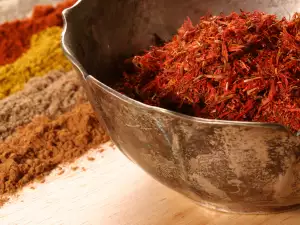
In hot dishes, saffron is added 5 minutes before the end of cooking, and in dough - when kneading.
Benefits of Saffron
Saffron is so valuable for cooking and as a medicine, because of the medical applications for this spice have existed since time immemorial, seeing it applied in traditional healing and treatment. Even today, modern medicine confirms its anti- cancer, anti- mutagenic, immunomodulating, and antioxidant-like properties.
It has been shown that taking saffron with every meal helps hysteria and hemorrhoids. Saffron helps in cases of depression too. It help for this, because it helps the production of the happiness hormone- serotonin.
Take five or six stamens and pour one cup of warm water. Never use hot water because it will literally destroy the beneficial properties of saffron tea. On the way the tea is drunk in one or two gulps for one day. Straightway saffron tea also helps with diseases of the eye, and especially treacherous for conjunctivitis.
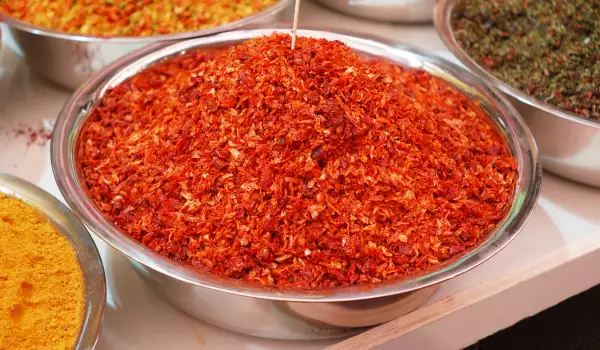

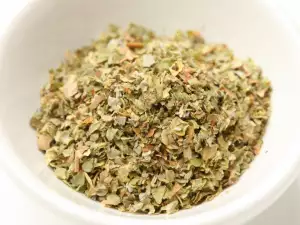
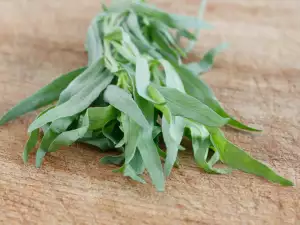
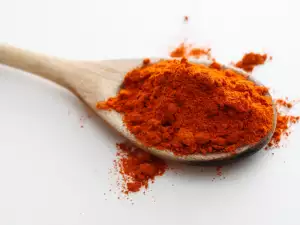



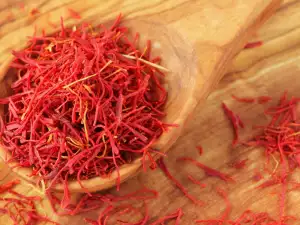
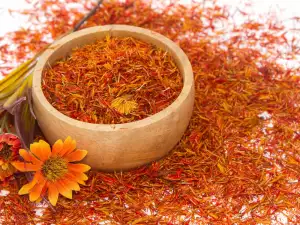

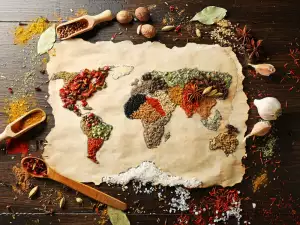


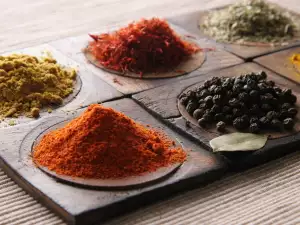





Comments